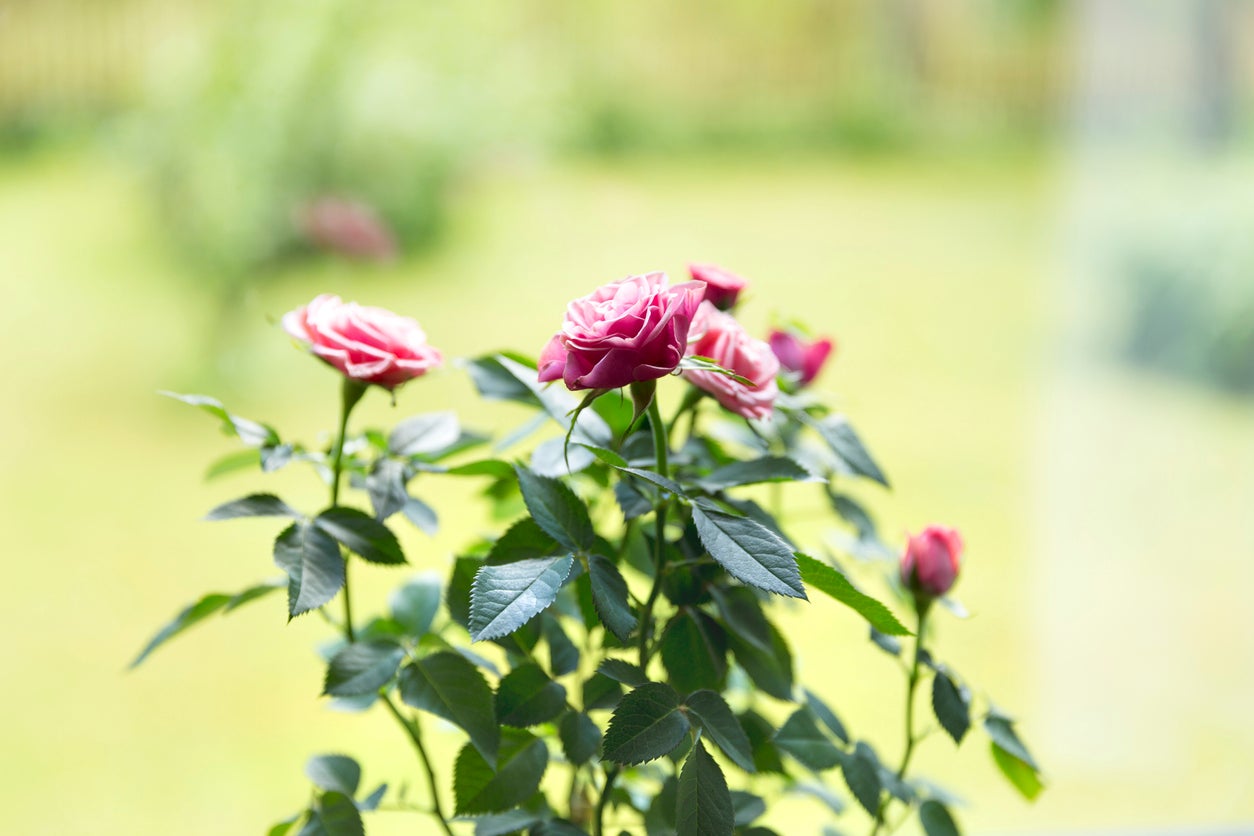Miniature Rose Indoor Care: Keeping A Mini Rose Houseplant


Potted miniature roses are an insanely popular gift for plant lovers. Ranging in color and bloom size, miniature roses look lovely when kept indoors. While the plants may bloom prolifically throughout the longer daylight hours, many miniature roses may begin to fizzle as cooler temperatures arrive in the fall.
By learning more about the needs of these mini roses, growers will be able to keep healthy plants all season long. Read on to learn about miniature rise indoor care.
Are Mini Roses Indoor Plants?
When it comes to a miniature rose, indoor care can be frustrating. Many growers have experienced the decline of these once beautiful potted plants. Like other types of rose, miniature roses will need a cool period that is similar to what they would experience naturally.
In most cases, this is simply not achievable indoors. While growers are able to briefly enjoy the blooms of their mini rose houseplant, the best option is to transplant it into the flower garden.
As with many roses, miniature varieties are exceptionally cold tolerant. Most of these plants will have no issue acclimating and continuing to grow once planted into the flower garden. To do so, harden off the rose plant over time and allow it to become accustomed to the outdoor temperatures and conditions.
For best results, this should be done at least one month before the first anticipated frost date in your area. Dig a hole that is twice as wide and twice as deep as the root ball of the plant. Ensure that the rose is planted in a well-draining location that receives ample sunlight each day.
How to Care for Indoor Mini Roses
If planting outdoors is not an option, there are some steps to take to keep your miniature roses indoors healthy. Above all, a steady routine of maintenance will need to be established. When growing miniature roses indoors, it will be imperative that growers remain dedicated to watering, fertilizing, deadheading, and pruning their plants.
Gardening tips, videos, info and more delivered right to your inbox!
Sign up for the Gardening Know How newsletter today and receive a free copy of our e-book "How to Grow Delicious Tomatoes".
By supplying the plants with ideal growing conditions, indoors gardeners are able to reduce the occurrence of disease or infestation of troublesome pests, like spider mites.
As the plant grows, make certain to repot it, as needed. Allowing the plant ample room in the container will be important in the production of flower blooms.

Tonya Barnett has been gardening for 13 years. Flowers are her passion. She has transformed her backyard into a cut flower garden, which she regularly chronicles on her YouTube channel http://www.youtube.com/@tonyawiththeflowers.
-
 Looking For Plants To Give You The Soft And Fuzzies? Try These 5 Fuzzy Leaf Plant Options
Looking For Plants To Give You The Soft And Fuzzies? Try These 5 Fuzzy Leaf Plant OptionsLovers of texture, drama, silver foliage and tactile plants will adore these special sensory garden additions. These fuzzy leaf plant options will leave you all aglow
By Susan Albert
-
 Get Ready For A Summer Of Hummers! Grow These Full Sun Hummingbird Plants and Flowers
Get Ready For A Summer Of Hummers! Grow These Full Sun Hummingbird Plants and FlowersIf you’re lucky enough to enjoy a sunny backyard, make sure you are maxing out on your pollinator opportunities and grow these full sun hummingbird plants and flowers
By Tonya Barnett